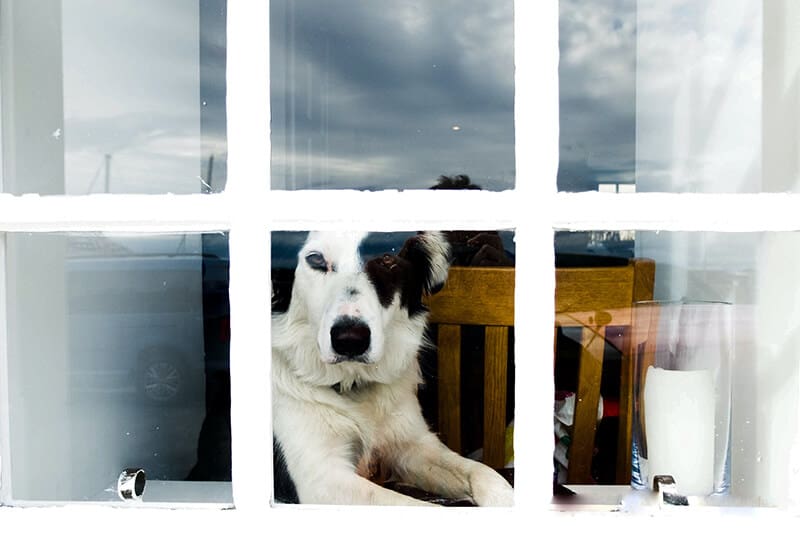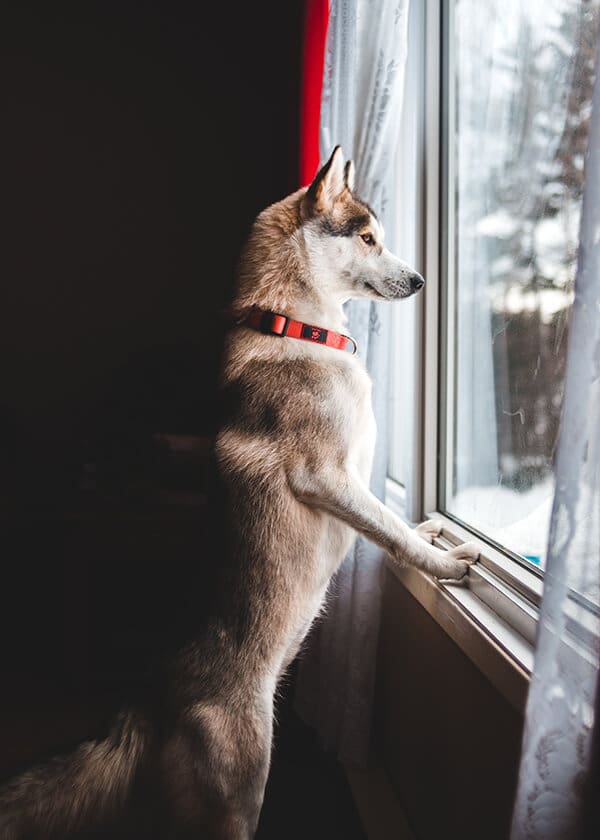In recent weeks, humans are not the only ones who have been affected by stay-at-home orders. As most of us have been home so much more than usual due to efforts to slow the spread of COVID-19, pets have settled into new routines of having their families with them nearly all the time. This has likely provided great bonding, play, and exercise time together, as well as so many extra cuddles. Just being in the same room is pleasant for both parties, not to mention the science behind pets being good for our health and boosting our oxytocin levels. Cats and dogs are creatures that thrive on routine. Now, as states and counties across the U.S. are in the early stages of lifting some restrictions, many pets are about to have their schedules turned upside down again. This is a recipe for separation anxiety for some of our fur kids.
 Separation anxiety hasn’t been a problem before? Not familiar with it? Let’s start with what it is.
Separation anxiety hasn’t been a problem before? Not familiar with it? Let’s start with what it is.
If your dog “freaks out” when you leave home, he or she might have separation anxiety. If your cat is suddenly peeing or pooping on your personal belongings only when you leave home, he or she might have separation anxiety too. Sometimes this can be confused with a medical problem, a pet who simply needs some patient training to learn house manners or exercise to help burn some energy. If in doubt, always talk to your vet to rule out medical problems first.
Separation anxiety is distress that happens as a result of your pet being upset or fearful that you have left. This is a real anxiety that can range from mild to severe, and we know that anxiety isn’t always entirely rational. It’s panic. It’s stress. And simply being told to “calm down” doesn’t do the trick for people or for animals. Further, pets don’t have the ability to call you and ask for assurance that you’re not leaving them forever or to book an appointment with a therapist to discuss feelings of abandonment. So they react the only way they feel a personality with no thumbs and limited vocal abilities can.
We don’t fully understand why some pets develop separation anxiety but others don’t. It’s important to know, though, that there are varying degrees of it. On one end of the spectrum, you’ll have no doubt what’s going on, but keep an understanding eye out for milder symptoms too.

First and foremost, scolding or otherwise punishing an animal for being scared will NEVER help the situation. It will likely have the opposite effect.
Not heading back to work or school yet? This is the perfect time to ease your pet back toward a new routine of you being gone from home more. The most important thing to remember is to start small. Leaving the house for several hours at a time, day after day, will not typically result in them “just getting used to it”. Likewise, crating them if they don’t already have existing associations and training in place to make the crate a safe, positive place that they enjoy will likely be stressful. Instead, take baby steps, be positive, and be patient.
Begin by making an effort to associate some positives with you leaving. For example, a stuffed Kong toy or treat puzzle that your pet only gets when you’re leaving can be helpful. It should be high-value to them and also take 20-30 minutes for them to finish it.
If your pet’s anxiety is more than very mild, then you’ll need to invest time into many short, positive instances of you leaving the house. This might be a 60 second trip down your street then right back, three times daily until you can see that there has been no panic, just calm. Work up from there over the course of days or weeks. Don’t rush your pet. Patience and consistency are everything.
For severe separation anxiety, it’s best not to go at this alone. Find a reputable trainer who only uses positive reinforcement tactics. Ask for references specific to fear or anxiety. Any punishment or negative association will only make things worse, so don’t even think about a shock collar to stop the barking. That will take the anxiety that is already present, and double down on fear without ever addressing the core problem.